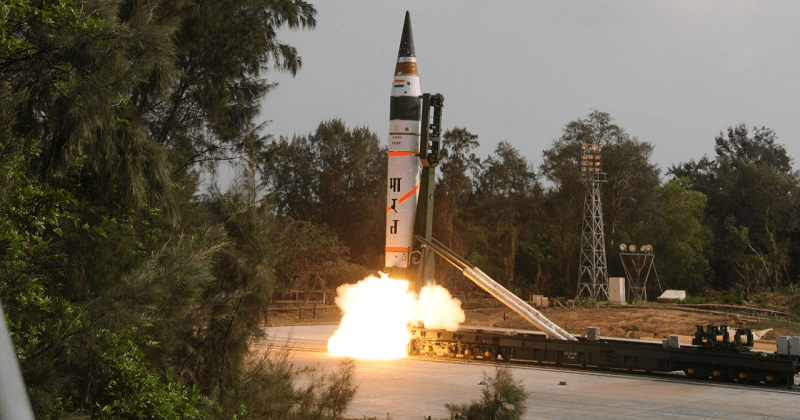
India successfully accomplished the test-fire of indigenously developed nuclear-capable long-range ballistic missile Agni-5, the missile has a strike range of 5,000 km, off the Odisha coast. This was the sixth trial of the state-of-the-art Agni-5.
The missile was fired with the support of a mobile launcher from launch pad-4 of the Integrated Test Range (ITR) at Dr Abdul Kalam Island in the Bay of Bengal at 9.48 a.m., defence sources said.
The missile completed its full distance during the trial which was a total success, they said.
“The flight performance of the missile was tracked and monitored by radars, tracking instruments and observation stations all through the mission,” the sources said.
Among other missiles of the series, Agni-5 is the most advanced with new technologies in terms of navigation and guidance, warhead and engine, said a Defence Research and Development Organisation (DRDO) official.
Agni – 5, built with many new technologies developed indigenously were successfully tested in the test trial. Navigation systems, very powerful accuracy Ring Laser Gyro-based Inertial Navigation System (RINS) and the most modern and accurate Micro Navigation System (MINS) had ensured the missile reached the target point within few meters of accuracy, the official explained.
“The high speed onboard computer and fault-tolerant software along with robust and reliable bus guided the Missile flawlessly, he said.
After the missile reached the peak of trajectory, it will turn towards the earth and continue its journey towards the intended target with an increased speed due to the attraction of earth’s gravitational pull. The path has been precisely directed by the advanced onboard computer and inertial navigation system. The missile works according to the programme that has been applied for the missile execution.
As the missile enters the earth’s atmosphere, during the re-entry phase raises the temperature beyond 4,000 degrees Celsius, due to the pressure that influenced on the missile skin, sources said.
Read More: Kerala PoliceWoman Shares Her Bedroom Picture in a WhatsApp Group For This Reason
However, the indigenously designed and developed carbon-carbon composite heat shield continues to burn sacrificially, protecting the payload and maintaining the inside temperature below 50 degrees Celsius, the sources added.
The ships located in mid-range and at the target point tracked the vehicle and witnessed the final event. All the radars and electro-optical systems along the path monitored all parameters of the missile and displayed in real time, they added.
The third, fourth and fifth launches were from canister integrated with a mobile launcher, in its deliverable configuration that enables the launch of the missile with a very short preparation time as compared to an open launch.
It also has advantages of higher reliability, longer shelf life, less maintenance and enhanced mobility, sources said.
At present, India has in its armoury the Agni series — Agni-1 with 700 km range, Agni-2 with 2,000 km range, Agni-3 and Agni-4 with 2,500 km to more than 3,500 km range.
All the five earlier trials were successful, which are; the first test of Agni-5 was conducted on April 19, 2012, the second on September 15, 2013, the third on January 31, 2015, and fourth on December 26, 2016. The last test was held on January 18, 2018.

Post Your Comments